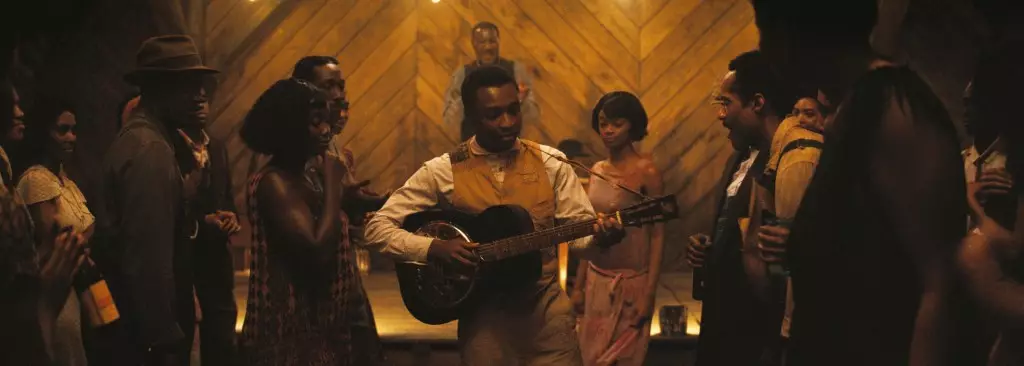In a surprising twist within the film industry, “Sinners” has managed a remarkable box office performance, raking in an impressive $48 million during its opening weekend. Expected projections had deemed the film would max out at a mere mid-$30 million. But how did this movie, initially viewed with skepticism, achieve such success in a genre that has been struggling for traction? It fundamentally illustrates the impact of positive word-of-mouth and critical acclaim. The astounding 98% approval rating on Rotten Tomatoes and an A CinemaScore are clear indicators of its appeal. This kind of glowing reception is like a multifaceted diamond—each facet reflecting the movie’s strengths in different lights.
The rich tapestry of viewers’ responses is what led to “Sinners” transcending its initial projections. When audiences feel inclined to recommend a film, as indicated by the 84% positive recommendation on PostTrak, it generates a momentum that marketing departments dream of. Essentially, a movie that garners such favorable feedback becomes its own best advertisement. In today’s oversaturated cinematic landscape, where the horror genre often faces a glut of mediocre offerings, this feedback loop can be a make-or-break element for box office success.
A Risky Marketing Strategy Pays Off
Warner Bros., under the leadership of Michael De Luca and Pam Abdy, navigated a risky, yet ultimately successful marketing strategy with “Sinners.” This marketing campaign took on multiple layers, culminating in the decision to hold back critical elements until the film’s eventual release. Pre-release hype can be a double-edged sword; overselling can lead to unmet expectations, while underplaying can cordially pique curiosity. The initial trailer for “Sinners” had not sent ripples across the audience’s emotional spectrum, primarily because it was an original production and did not feature known franchises.
However, the filmmakers realized that holding back the reveal of some key aspects—like the vampires hinted at in their second trailer—allowed for a more impactful surge in interest as the release date approached. It demonstrates that a strategic rollout can pay dividends. Also, the addition of celebrity endorsements and influencer promotions during pivotal cultural events like the Grammy Awards fortified that momentum even further. The marketing brilliance lies in its execution, where every layer built upon the next, crafting a compelling narrative around the film that resonated with audiences.
IMAX as a Promotional Vehicle
One of the notable innovations in the film’s promotional strategy was its embrace of IMAX technology. Bringing the movie to a larger canvas is not merely a technical upgrade; it’s a strategic gambit aimed at creating an immersive experience that elevates the film’s perceived value. The fact that “Sinners” utilized IMAX cameras marks a distinct point in its marketing push, taking cues from industry heavyweights like Christopher Nolan. This commitment elevates the overall cinematic experience and targets film enthusiasts who seek more than just a passive viewing.
Ryan Coogler, known for his work in “Black Panther,” didn’t just push the slick visuals; he translated them into a collective call to action, inviting audiences to partake in an event, rather than just viewing a film. The promotional premieres held in major cities further solidified the social fabric surrounding the film. This is where horror films have often failed: stretching for higher grounds rather than paring down to community-driven experiences. In contrast, “Sinners” managed to cultivate that local buzz effectively, a strategy often neglected in favor of broad reaching campaigns.
Timing is Everything
The decision to position “Sinners” for an Easter weekend release is another critical aspect of its box office triumph. Releasing a film during a time when families are typically seeking entertainment options enhances its potential audience significantly. Warner Bros. moved the film from a March release, pushing it into a prime holiday window that had worked favorably for multiple blockbusters in the past. This timing not only capitalized on family attendance patterns but also allowed for extra fine-tuning.
While we can easily deem the project as risky due to its original content, strategic timing proved to be the secret weapon. Coupling this wider audience outreach with good word of mouth solidifies that in the end, paying close attention to the calendar is as essential as paying attention to the story.
Breaking the Norms of Horror Marketing
As the horror genre grapples with repetitive narratives and dwindling returns, “Sinners” offers a fresh perspective. Typically, horror films are pigeonholed into niche marketing targeting zealots of the genre. However, this film broke that mold by reaching beyond its core audience. The appreciation from mainstream audiences signals a necessary evolution in how horror should be marketed—moving toward a more inclusive strategy that celebrates variety in storytelling rather than sticking rigidly to traditional tropes.
This wide-reaching approach reflects a more modern sensibility, one that sees the potential for stories worth telling exist across genres. Studios must take note of this success and view it as an imperative template for future projects, particularly in genres that struggle against formulaic storytelling. “Sinners” represents a crucial pivot point in reshaping how horror films can, and should, be marketed for optimal success.

